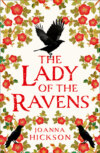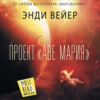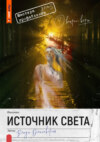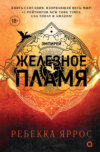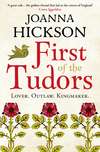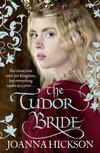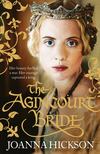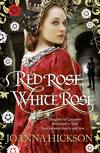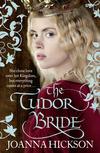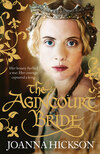Buch lesen: «The Lady of the Ravens»
THE LADY OF THE RAVENS
Joanna Hickson

Copyright
HarperCollinsPublishers Ltd
The News Building
1 London Bridge Street
London SE1 9GF
First published by HarperCollinsPublishers 2020
Copyright © Joanna Hickson 2020
Jacket design by Holly Macdonald © HarperCollinsPublishers Ltd 2021
Cover illustrations © Shutterstock.com
Joanna Hickson asserts the moral right to be identified as the author of this work.
A catalogue copy of this book is available from the British Library
This novel is entirely a work of fiction. The names, characters and incidents portrayed in it are the work of the author’s imagination. Any resemblance to actual persons, living or dead, events or localities is entirely coincidental.
All rights reserved under International and Pan-American Copyright Conventions. By payment of the required fees, you have been granted the non-exclusive, non-transferable right to access and read the text of this e-book on screen. No part of this text may be reproduced, transmitted, down-loaded, decompiled, reverse engineered, or stored in or introduced into any information storage and retrieval system, in any form or by any means, whether electronic or mechanical, now known or hereinafter invented, without the express written permission of HarperCollins.
Source ISBN: 9780008305611
Ebook Edition © February 2021 ISBN: 9780008305598
Version: 2020-11-09
Dedication
‘For my ever-supportive husband Ian, who calms me down when I’m up, lifts me up when I’m down and always has a bottle of champagne in the fridge on publication day!’
Contents
Cover
Title Page
Copyright
Dedication
Family Tree
Map
Dramatis Personae
Part One
Chapter 1
Chapter 2
Chapter 3
Chapter 4
Chapter 5
Chapter 6
Chapter 7
Chapter 8
Chapter 9
Chapter 10
Chapter 11
Chapter 12
Chapter 13
Chapter 14
Part Two
Chapter 15
Chapter 16
Chapter 17
Chapter 18
Chapter 19
Chapter 20
Chapter 21
Chapter 22
Chapter 23
Chapter 24
Chapter 25
Chapter 26
Chapter 27
Chapter 28
Part Three
Chapter 29
Chapter 30
Chapter 31
Chapter 32
Chapter 33
Chapter 34
Chapter 35
Chapter 36
Chapter 37
Chapter 38
Chapter 39
Part Four
Chapter 40
Chapter 41
Chapter 42
Chapter 43
Chapter 44
Chapter 45
Chapter 46
Chapter 47
Chapter 48
Glossary
Author’s Notes
Acknowledgements
Keep Reading …
About the Author
By the Same Author
About the Publisher
Family Tree

Map

DRAMATIS PERSONAE

Royal Family:
Henry Tudor – King Henry VII
Lady Margaret Beaufort – ‘My Lady the King’s Mother’
Elizabeth of York – Queen Elizabeth
Princess Cecily of York – the queen’s sister & 1st Chief Lady-in-Waiting
Princess Anne of York – the queen’s sister & 2nd Chief Lady-in-Waiting
Dowager Queen Elizabeth (Woodville) – the queen’s mother
Arthur, Prince of Wales – born 20th September 1486, the Tudor heir
Margaret Plantagenet/Pole – the queen’s disinherited York cousin
Edward, Earl of Warwick – Margaret Plantagenet’s younger brother
John, Earl of Lincoln – son & heir of the queen’s paternal aunt Elizabeth, Duchess of Suffolk
Margaret, Dowager Duchess of Burgundy – the queen’s other paternal aunt & a focus of Yorkist conspiracy
Jasper Tudor, Duke of Bedford – King Henry’s paternal uncle
John, Viscount Welles – the king’s maternal half-uncle
Princess Margaret Tudor – born 28th November 1489, eldest daughter of the king
Prince Henry, Duke of York (Harry) – born 28th June 1491, the king’s 2nd son
Princess Elizabeth Tudor – born 2nd July 1492, 2nd daughter of the king
Princess Mary Tudor – born 18th March 1496, 3rd daughter of the king
Prince Edmund, Duke of Somerset – born 21st February 1499, 3rd son of the king
Lady Meg Poyntz – queen’s illegitimate cousin by Anthony Woodville, Earl Rivers (see English citizens & Deceased characters)
Royal Households:
King Henry:
PC=Privy Councillor
KG=Knight of the Garter
Sir Richard Guildford – Master of Ordnance & Armaments & PC Later KG
Nicholas Gainsford – Usher of the King’s Chamber
Lord Thomas Stanley – Earl of Derby, High Constable of England & PC Husband of the king’s mother
Sir William Stanley – Earl of Derby’s brother, 2nd Lord Chamberlain, PC & KG
John Morton – Archbishop of Canterbury, Lord Chancellor & later Cardinal
John de Vere, Earl of Oxford – 1st Lord Chamberlain, PC, KG & Arthur’s Godfather
Sir Henry Wyatt – Master of the King’s Jewels & Comptroller of the Mint
Giles, Lord Daubeney – succeeded Sir William Stanley as Lord Chamberlain, PC & KG
Queen Elizabeth:
Joan Vaux – former ward of Lady Margaret, later Lady Guildford
Katherine Pennyson/Lady Vaux – Joan’s mother, known as Mother Vaux
Lady Mary Rivers – widow of the queen’s uncle Anthony, Earl Rivers & former ward of Lady Margaret Beaufort
Eleanor Verney – Lady-in-Waiting, married to Sir Ralph Verney, sister of Richard Pole
Elizabeth Jerningham – Keeper of the Queen’s Robes
Thomas Butler, Earl of Ormond – Queen’s Lord Chamberlain
Lady Elizabeth Stafford – 3rd Chief Lady-in-Waiting & daughter of the Duke of Buckingham
Guildford Family:
Sir Richard Guildford of Halden, Kent – Master of Ordnance & Armaments
Sir John Guildford – Richard’s father & Comptroller of Royal Household
Richard’s children in age order:
by Anne Pympe:
Edward (Ned)
Maria
George
Philippa (Pippa)
Friedswide (Winnie) – Friedswide a popular saint in this period, also known as Winifred
Elizabeth (Lizzie)
by Joan:
Henry (Hal)
Elizabeth (Bess) Mortimer – Richard’s ward
English citizens:
Rosie – a London silkwoman
Nicholas Vaux – Joan’s brother, a landed esquire, later knighted
Beth Fitzhugh/Vaux – his Yorkist bride
Lambert Simnel – name given to the pretend Edward of Warwick
Richard Pole – Esquire (later Knight) of the King’s Body, brother of Lady Eleanor Verney & husband of Margaret Plantagenet
Martin Steward – a senior Guildford servant
Hugh – a scullion training as a server
Luce – a Guildford maidservant
Jake – the Guildford cook
Wynkyn de Worde – printer at Caxton’s Westminster press
Mistress Wood – governess to the Guildford children
Sir John Digby – Lieutenant Constable of the Tower of London
Lettie Stock – a London midwife
Mistress Strood – a Kent farmer’s wife & breast nurse to baby Hal
Hetty Smith – a maidservant from the Kent village of Rolvenden
Sir Robert Poyntz – a landed knight, husband of Meg Woodville
Anthony Poyntz – their eldest son
Jane Howell – governess to Prince Henry & former nurse to King Henry
Mistress Brook – 2nd governess to the Guildford children
Deceased characters:
Queen Marguerite – Marguerite of Anjou, wife of King Henry VI the last Lancastrian King of England
Edward (Édouard), Prince of Wales – their son
Sir William Vaux – Joan’s father
Edward IV – Yorkist king who deposed Henry VI
Prince Edward of York & Prince Richard of York – The Princes in the Tower, deaths unknown
Richard of Gloucester – Richard III (the usurper), Edward IV’s brother
Anne Pympe – Sir Richard Guildford’s 1st wife
Anthony Woodville, Earl Rivers – executed on Richard III’s orders (father of Meg Poyntz)
1

THE CART RUMBLED PAST so close that it almost killed me. I was forced to flatten myself against the gatehouse wall or I would surely have been crushed before I had even entered the Tower of London. Limewash and mortar flaked off the masonry, smearing my gown with white dust. Then suddenly, above the diminishing sound of rolling wheels and clattering hooves, I heard the rasping ‘kwaark’ of a raven and a childhood memory rushed in to swamp my senses. I became my nine-year-old self, trembling under the gaze of a large black bird with a bill like the hook of a soldier’s halberd and an eye that could pierce the soul. Then that fearsome beak had opened to emit a hoarse cry, bringing tears to my eyes, and I heard the gravelly voice of my escort, an elderly knight from the Tower’s garrison.
‘Think yourself honoured, young mistress. The ravens avoid us men because the archers use them for target practice. But there is a legend, which says that as long as they haunt the Tower, it and the kingdom will stand. Just lately they’ve been coming and going, so perhaps there’s something in it.’ At the time I didn’t understand what he meant but so vividly had the raven’s image imprinted itself in my mind, that the incident and his words had remained with me ever since.
Now thirteen years later another cart, heaped high and shedding fragments of its cargo as it juddered over the cobbles, made me press even harder against the wall and my heart thudded as a real raven was suddenly there at my feet, rushing in with a triumphant flap of feathers to peck up a speck of shiny discarded metal that glimmered in the gatehouse gloom. My daydream dissolved into reality. The carts were carrying gold and silver scrap to the Royal Mint and the raven scampered away with its booty, rising on beating wings as it cleared the archway. Hastening into the daylight, I watched it carry off its treasure, to secrete it somewhere high on the battlements.
I stood transfixed, admiring its fluid, swooping flight until an angry shout from behind alerted me. ‘Hey! Clear the way! D’you want to get killed?’ I jumped to the side again as another laden cart trundled past, the driver red-faced and yelling. ‘God’s blood, woman! There’s no room for stupid skirts in here.’
Fearing more vehicles, I made a run for the gate at the other end of the moat bridge and took refuge through a door in an adjacent building, which I knew should contain the office of the man in charge. I felt in the purse on my belt and removed the letter within.
‘Tell me, what business can a female possibly have in a military fortress?’ The young Lieutenant Constable was hook-nosed and handsome, with all the hubris of noble privilege and not a hint of charm. He had given my letter barely a glance.
‘I am on royal business, sir, as the letter says.’ I held out my hand. ‘May I have it back? I know where I am going.’
His eyes scanned the page and rested on the signature at the bottom. ‘Who is MR?’ he asked, refolding the note and handing it to me.
I could have remarked that he should know but I desisted. ‘Margaret, Countess of Richmond, is the king’s mother – MR is her cypher.’ Knowing the lady well, as I did, I reflected that it could equally be a monogram for ‘Margaret Regina’ but resisted the temptation to point this out.
He did not respond verbally but his curled lip and disapproving sniff were revealing. It was only weeks since Lady Margaret’s son, Henry Tudor, had taken the throne ‘by right and conquest’, to become King Henry the Seventh of England and there were still plenty of dissenting Yorkists among minor royal officials. I didn’t give this one many more days in his present post.
As I hurried along the narrow street between the twin curtain walls that defended the fortress from a river attack, I couldn’t resist searching for more signs of ravens on the battlements of the main keep, which reared above me to my left. These enigmatic birds had haunted my dreams ever since I had made that first fearful childhood trip to the Tower to visit my mother. Whatever the men had said about it being no place for women, I could have begged to differ. My mother, Katherine Vaux, had lived within its intimidating walls for two years and the captive lady she had served there had once been Queen of England.
My grandfather, a doctor from Piedmont, had been physician to the Duke of Anjou’s family and in her childhood my mother had been invited to join their schoolroom. When the duke’s daughter Marguerite married King Henry the Sixth of England, she had travelled with her to his court and later married one of his household knights, Sir William Vaux, becoming an English citizen. When civil war erupted and Edward of York snatched the throne, forcing King Henry and Queen Marguerite to flee their kingdom, my loyal Lancastrian parents escaped with my young brother Nicholas to my mother’s birthplace in Piedmont. A few months later, I was born and baptised Giovanna, after my Italian grandmother.
My baptismal name may be Giovanna, but English is not a lyrical language like Italian is. Here in my mother’s adopted country I have become plain Joan; and plain is what the English think me, as I am not pink-cheeked and golden-haired like the beauties they admire. I have olive skin and dark features – black brows over ebony eyes and hair the colour of a raven’s wing. With my full lips and straight nose, many consider me odd, or probably, to put it bluntly, ugly. ‘Jolie-laide’ is what the French used to call me, more kindly. Perhaps that is one reason why I habitually wear dark colours and am so drawn to the big black birds that haunt the cliff-like walls of the Tower and why, as I hastened to my meeting on that late September day, I was enraged at seeing one of the sentry archers on the battlements take aim at a raven as it flew close to his position on the roof of the Royal Palace. Luckily the arrow missed its target but I was still seething while I negotiated my way past another set of guards and into the fortress’s intimidating limewashed keep, known as the White Tower.
‘May I ask what a young lady like you is doing here?’
At least this time the inquiry was couched politely and came from a trimly bearded man of obvious status, wearing a furred gown, with a gold chain about his shoulders and a black hat pinned with a jewelled brooch. I had almost run into him in the gloom of the main troop-gathering hall, which was empty and echoing and lit only by the daylight filtering through a few high barred windows. Swallowing my first indignant riposte, I made him a brief curtsy.
‘I’ve been sent by My Lady the King’s Mother, sir.’ Once again I offered my letter of charge.
‘Have you indeed? Let me see.’ In order to scan the script he had to squint and hold it up to what little light there was, then he made me a courteous bow. ‘Welcome to the Tower of London, Mistress Vaux. I am Sir Richard Guildford, the king’s Master of Ordnance, in charge of the guns and weapons that are held here. But I cannot believe they are relevant to your purpose. I see you are bidden to the Chapel of St John. For what reason, I wonder?’
I shook my head. ‘We would both like to know the answer to that, Sir Richard, but it is a royal command, which one does not query.’
He inclined his head. ‘Indeed.’
‘I have a question for you though, sir.’ I took a steadying breath before plunging on. ‘If you are in charge of weapons, why are the archers wasting arrows, firing them at the ravens? What harm have they done?’
Even in the dim light I could see his cheeks flush and his next words were delivered with savage emphasis. ‘Those ravens are the devil’s demons – filthy scavengers and harbingers of death! All soldiers hate them and the archers are encouraged to use them for target practice. An arrow is retrievable, preferably with a dead bird attached.’
Or possibly a dead passer-by, I thought. I bit back any comment but he must have noticed my look of angry astonishment. I wondered how a man who lived and worked in the Tower could be ignorant of the widespread belief among Londoners that the presence of ravens was essential to the fortress’s security and that of the city and the kingdom they inhabited. This folk legend and its subjects had stayed with me ever since I had heard it as a child from the old garrison knight and over the ensuing years I had made it my business to read whatever I could find on both the birds and the belief.
During the resulting silence he recovered his composure and gave me a brief smile. ‘Now, Mistress Vaux, may I call someone to show you to the Chapel of St John?’
Although I could not bring myself to return the smile, I made an acknowledging bob. ‘Thank you, Sir Richard, but I know the way.’
I sensed his puzzled gaze following me to the foot of the long stair. Like all castle chapels, it was situated above the other chambers, giving prayers a clear path to heaven, and on other visits to my mother and the captive queen I had made the climb to the top of the White Tower to find them at Mass. On this occasion two Ushers of the King’s Chamber were there still wearing the blue and murrey household livery issued under the Yorkist kings, along with an assortment of other men in civilian dress. I was acquainted with one of the ushers, a landed squire called Nicholas Gainsford, and as soon as I arrived he began lecturing us on how anything we saw or heard that morning was to be considered a state secret and revealed to no one; everything had to be committed to memory and nothing written down. Having calmed my alarm on behalf of the ravens, I felt my heart flutter anew at Usher Gainsford’s stern admonishments.
Bizarrely, the frame of a large bedstead had been erected in the chapel nave and it was to this that he proceeded to direct our attention, impatiently beckoning us to gather around it. I received curious glances from the strange men as we jostled for position, aware that the presence of a woman was perplexing to them. Not for the first time I wondered what I was doing there myself.
‘You are all here to learn precisely how to make the king’s bed,’ the usher continued, as if reading my mind. ‘At present his grace is living at his manor of Kennington, a small palace over the river, which is easily secured and presently inhabited only by people well known to him and sworn to his affinity. But after his coronation he will be living in many larger royal palaces including the one located here, within the Tower of London. Such buildings are a warren of chambers, passages and staircases, containing many entrances and large numbers of people – not easy to keep secure. So when King Henry inhabits these palaces, or visits the homes of his favoured subjects, he will always have his own secure royal quarters, an area known as the Privy Chamber. Only trusted subjects who have sworn an oath of allegiance will be admitted into this reserved area, which will contain all the rooms necessary for his ease and comfort, where he can consult with his advisers and councillors in certain knowledge that what is said and done within its walls will go no further. And of course the most important of these rooms is that in which the king takes his rest – his bedchamber.’
He let his gaze roam over the gathering. ‘You men have been appointed Yeomen of the Guard of the Body of our Lord the King and, apart from protecting the king wherever he goes, an important part of your duties will be to make the monarch’s bed daily. To ensure that it is clean and comfortable and, most importantly, free of any hazard from hidden blades, poisonous plants, or biting insects that might cause him ill, injury or irritation. And naturally, when his grace marries he will want his queen’s rest to be as free from danger and discomfort as his own; therefore we have a lady here with us.’ My eyes flicked nervously about as everyone turned in my direction. ‘Mistress Vaux is charged with relaying all that she sees and hears to the sworn women of the bedchamber of his eventual bride. Before you leave today, all of you will be required to take an oath of loyalty before the Lord Chamberlain of the King’s Household.’
Having long lived under Lady Margaret Beaufort’s roof, I was probably already as familiar as any there with the best way to prepare a bedstead for the nobility but Usher Gainsford was taking no chances with royal security. He literally started from scratch, feeling with the tips of his fingers and scraping with his nails all the way around the wooden bedframe and headboard, looking for any crack or crevice where something sharp or noxious might be hidden. Then he ordered one of the men to strip to his chemise and hose and, to the obvious amusement of his fellow yeomen, roll around on the thick rush mat spread over the ropes, to test it for needles, thorns or twigs.
‘A sharpened twig soaked in the juice of deadly nightshade berries can work its way through to the sleeper, who falls into a stupor from which he does not wake,’ he warned, then lifted the straw mattress and dramatically sliced open the end with a sharp knife. ‘You need to distinguish between the different plants used to stuff this layer. Ladies’ bedstraw is best and this one,’ he picked out a dried stem with leaves larger than the rest, ‘is called woodruff and has a scent like freshly mown hay.’ He picked up a handful of the stuffing and peered closely at it. ‘This mattress should be opened and refilled and all feather beds shaken and checked regularly. Some of you yeomen will be appointed Keepers of the Wardrobe of the Beds, in charge of storing the royal bedclothes in locked and insect-proof chests every day and responsible for ensuring that a record is taken of when checks are made.’
One of the men spoke up. ‘In view of these precautions, sir, how would anyone manage to corrupt the royal bed? If everything is so carefully locked away and checked and the Privy Chambers are restricted to sworn servants, it does not seem very likely.’
Usher Gainsford cleared his throat and a flush stained his cheeks. ‘One of a yeoman’s duties is to report any hint of a colleague failing in his loyalty. You have all been chosen because you are known to be staunch Lancastrians but King Henry is anxious to unite the country, bringing York and Lancaster together under his rule and the Tudor name, ending the recent years of strife. So it is to him and the family he intends to have that his household will swear allegiance and obedience. This will be a Tudor reign and in due course, God willing, a Tudor dynasty but to begin with this may not content everyone. Dissidents may contrive to be appointed to the royal household. Treachery can emerge anywhere. You, as individuals, will be responsible for reporting anyone criticising the Tudor reign, or showing the slightest preference for another house, to the Lord Chamberlain or his deputy.’
I had no great sympathy with dissidents, having lost my father to a Yorkist army fourteen years ago, but I found this last order bittersweet as I took my oath of loyalty and I hoped I would not be expected to observe and report on the new queen’s commitment to the Tudor dynasty that she would be expected to provide. Officially, six weeks into his reign, we still did not know the identity of King Henry’s eventual queen, although the fact that his mother had selected me to attend this meeting strongly suggested that it would be the young lady currently living under her roof at her palace of Coldharbour on the banks of the River Thames.
Elizabeth of York, to whom I had almost inadvertently become servant, companion and friend, was the eldest child of King Edward the Fourth and the princess Henry Tudor had vowed to marry in order to boost support for his ultimately successful expedition to establish his own claim to the throne of England. But this had only happened after Edward died unexpectedly and his two young sons were brought to the Tower’s Royal Palace to await the elder boy’s coronation as King Edward the Fifth. This was because their uncle Richard, Duke of Gloucester, apparently unprepared to act as mere Protector to a boy king, contrived to get parliament to declare them illegitimate and to have himself crowned instead. Within weeks the York boys had disappeared from public view and two years later the usurping king, who as their Protector must surely have known what happened to them, had died fighting Henry Tudor’s invading army without revealing their fate.
From my staunch Lancastrian viewpoint, I considered the York history a chequered one; however it also greatly concerned me that Elizabeth and her mother and sisters might never discover when or how the two young princes died – if die indeed they both had. As I left the White Tower I paused to gaze up at the windows of the adjacent Royal Palace where the princes had been accommodated and in which soldiers and other Tower residents had reported catching occasional glimpses of their small, pale faces – until all sightings mysteriously ceased.
Although his victory in battle against the usurper Richard had brought King Henry to the throne, I was aware that it must also have left him with an urgent need to feel secure on it and a strong sense that he was not. Several leading Yorkist knights and nobles, captured after the battle, were now incarcerated in towers around the fortress and might expect to lose their heads as traitors to the new crown. However, peering through the open gate in the wall, which led onto the green beside the castle’s Church of St Nicholas, I could see that no scaffold had yet been erected there. Instead, bowmen had set up butts and were using them to hone their archery skills.
Remembering Sir Richard Guildford’s vehement comment that all soldiers detested ravens, I became anxious when one of them landed on the gateway arch. Within moments I heard the threatening zing of an arrow and intuitively ducked, as it seemed almost to skim my headdress. My heart skipped several beats but relief flooded my veins when I saw the raven fly off and the arrow drop harmlessly over the outer curtain wall, presumably into the moat.
‘Devilish bird!’ I heard an archer shout. ‘I’ll get you next time.’

